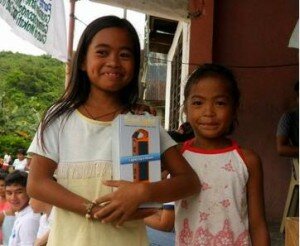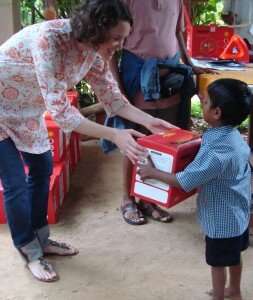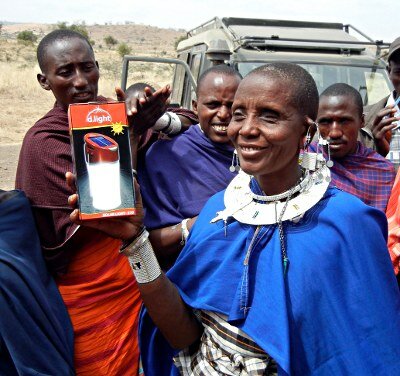8/15/2016
By: Jackie Ewing
The project to bring solar lights to the Masai has been totally successful. I was scheduled to travel with my church on a mission trip. Unfortunately, an unexpected medical issue interfered, and I was unable to make the journey. My church friends stepped in and distributed the lights. This account is, therefore, second hand information.
Getting to Ngoswani from Nairobi was an interesting trek. It took 4 hours or more by van. There were paved roads in the city of Nairobi, and as far as Narok. From there on the roads were gravel. They were crowned, with ditches on either side, but there were large rocks embedded in them. The vehicles traveled on whichever side appeared to be smoother, sometimes opting for the farm lane (two tracks in the dirt) that was beside the road. After only a week the Americans were amazed that the vehicles hadn’t vibrated and rattled apart! There were no other cities along the route, only small clusters of homes and perhaps a business or two.
Ngoswani, the destination, has no electricity, no running water, and no postal service. It is not a village or town as we would recognize them. The streets and houses are not laid out in any organized fashion. It is a collection of residences, a clinic and school, and a few small businesses, all widely scattered.
With the generous help of donors we were able to provide 500 regular solar lights, and 36 solar lights with cellular phone charging capability. The lights were distributed in several ways. They were given out at locations where individuals regularly gathered, ie; the cattle market, outside the Masai Mara Reserve, and at a Sunday service. About 125 lights were given at each location. Our local contacts at the clinic knew the people, and their needs, so they determined who would most benefit from having a light. Tickets were given out to those individuals who were to receive a light. Then they had to present the ticket to get a light. Other times as they drove from one place to another, they saw small groups or individuals and they stopped and gave them a light.
I had, had some small concern that because the Masai are very traditional people, and cling to their tribal ways, the technology of the lights might not be welcomed. I was wrong. The people clamored for the lights. At the first location they recognized the need for an organized system to keep from being overwhelmed by those who wanted a light. The Americans formed two lines, several feet apart, facing each other. Those with a ticket walked between them, received a light and exited the line. The lights were more than welcome, and were received with genuine gratitude.
The lights with cellular chargers were given to women who had small businesses, were heads of households, and teachers or employees of the school.
The majority of the lights were given to the Masai, however, about 100 lights were left at the clinic, so that they could be given to the nomadic herders as they returned home, or passed by.

 After a week-long distribution of 180 solar lights, Light Ambassador Sierra Fan reflects on her experience in the Philippines.
After a week-long distribution of 180 solar lights, Light Ambassador Sierra Fan reflects on her experience in the Philippines.
 The absolute joy in the face of a child who has just received his very own solar light… so that he can read at night… is 100% worth every penny.
The absolute joy in the face of a child who has just received his very own solar light… so that he can read at night… is 100% worth every penny.
 Ambassador Jessica Matthys: The solar lanterns will make a significant impact on these women‘s lives.
Ambassador Jessica Matthys: The solar lanterns will make a significant impact on these women‘s lives.